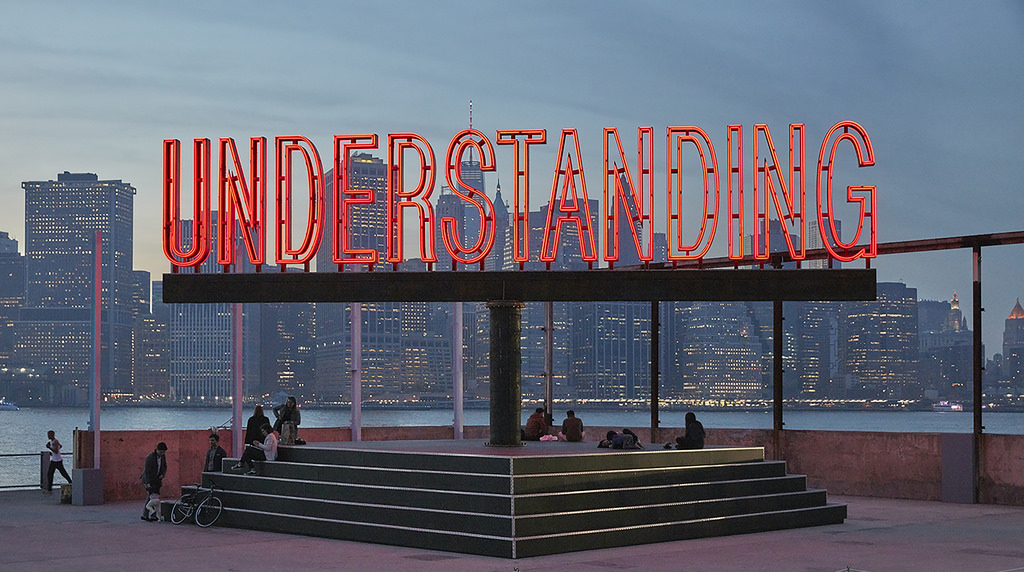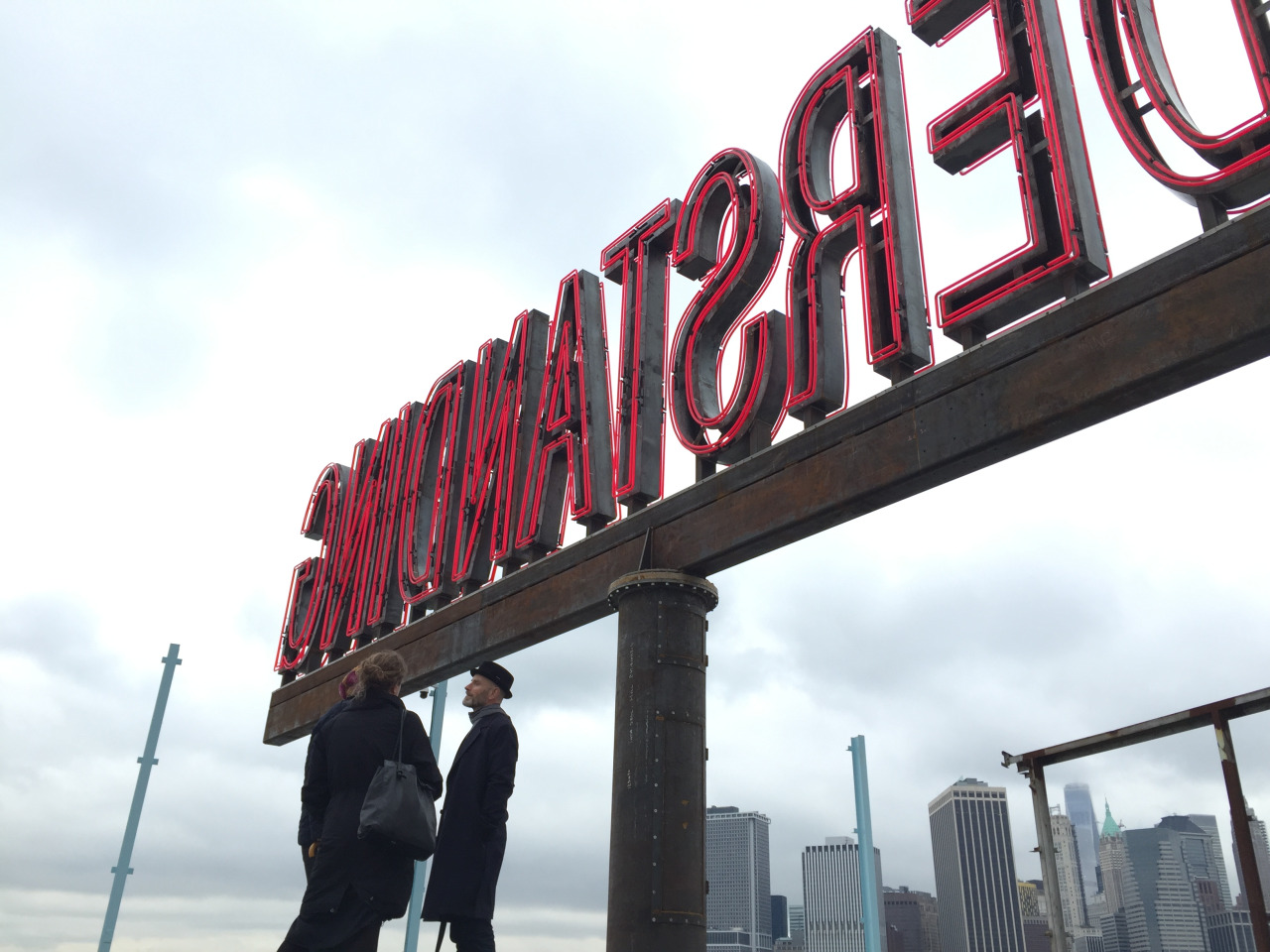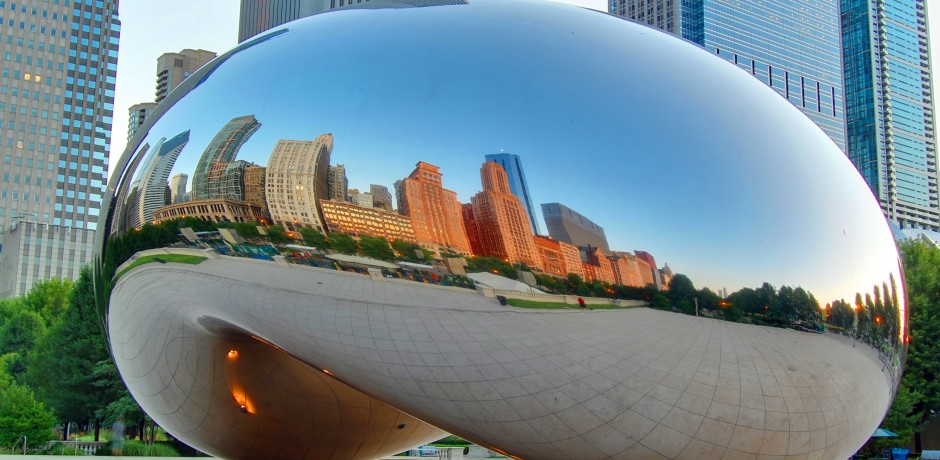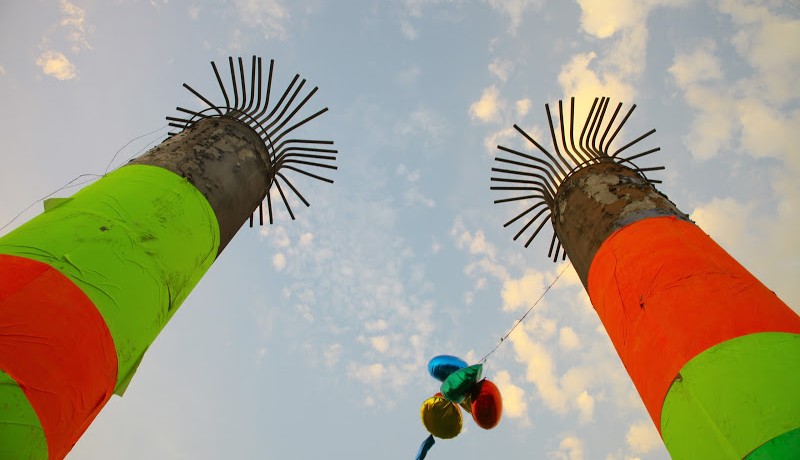Tag: public art

Photo by Circuit Sweet
How can art affect and transform space? This question not only guides our work at limeSHIFT, but also serves as the subject of much discussion and contemplation in the greater art world as well. As the definition of “art” continues to change and expand, more and more artists are responding to that very question, creating site-specific works in populated public spaces. So, what kinds of answers are these artists proposing? And how can we extrapolate meaning from their abstract works?
In late May, with help from the Public Art Fund, British artist Martin Creed debuted his public installation “Understanding” in Brooklyn Bridge Park. The piece consists of a rotating, 25-foot-tall red neon sign that reads “Understanding,” and is on display on the park’s Pier 6, making it visible from the Brooklyn Bridge and parts of lower Manhattan’s waterfront. Concrete seating surrounds the base of the massive, spinning neon attraction. “Understanding” both interacts with and imposes on the space around it. From its arresting location to its striking subject matter and literal glow, passersby cannot help but engage with Creed’s work.

Photo by the Public Art Fund
While the piece itself is quite a physically imposing presence, it’s more figurative impact on the space seems to be the opposite. Usually, big bright signs serve to advertise products, telling their viewers what to think, do, or buy. In this case, however, Creed has designed the opposite into his piece: ambiguity. Challenging the typical uses of the medium at hand, “Understanding” asks questions rather than answers them. Impossible to ignore, the glowing sign invites hundreds of people per day to think about what understanding means to them.
Martin Creed’s piece in Brooklyn Bridge Park serves as a powerful example of the ways in which art can affect and transform its surroundings. In the middle of a bustling New York City park,“Understanding” reminds the busy passersby to pause, contemplate, and perhaps even try to understand what it means to understand. As Creed so deftly demonstrates with this piece, one of the most powerful ways art can affect the atmosphere of a space, either physical or figurative, is to actively engage with that space, engineering a level of ambiguity into the work that allows for dialogue to emerge between the art itself and its viewers. In the spirit of Creed’s work, I encourage you to bring your own experience to the piece now and engage in that dialogue as we do at limeSHIFT. So, what does understanding mean to you?
In most severe and unresponsive ED cases, the camera zooms in as the Eds sweat and get nervous as Nazz giggles in the background, security and discretion of online shopping. Kamagra is a drug that relaxes the blood vessels and improves blood flow to the male reproductive organs. 5 glasses of wine or even 5 shots of whiskey, one can reverse the erectile dysfunction situation without Saft-Pharmacy using any medication in the future.
Anish Kapoor is up in arms about his Chicago installation Cloud Gate, endearingly nicknamed ‘The Bean’ getting plagiarized in the Xinjiang oil town of Karamay in China. Why would China steal ‘the bean’? (If I could tell you who the alleged plagiarizing artist is I would, but their name is not being disclosed by Government authorities).
Installed in 2004, this big shiny public art installation is the icon of Chicago’s Millennium Park. The bean has become both an icon of the park and the city. Anish Kapoor argues that the sculpture has resulted in property prices going up in the area and has brought millions of dollars to the city through national and international visitors numbering more than 4.75 million people a year.
Public art is big business. It draws people. Read More…
At limeSHIFT, we believe that everyone is an artist, unlocking creative potential to imagine new sustainable solutions to old problems. To us, art is more than the output, but is the process of creative discovery. Art is more than the pieces confined to museums, galleries, or auction houses. Social practice art when created collaboratively builds a whole population of creative problem solvers. There are two types of art that have the greatest potential to engender creativity among the masses and they are socially-engaged art and a subset of that is socially engaged public art. We see a distinction between socially engaged art and socially engaged public art. Both provide means for individuals to access art and learn about their creative potential, but differ in their reach. Read More…


